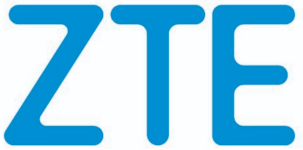Sponsored by:

5G services analytics must both support the dependable, precisely defined experience of a particular 5G service, and also provide a reliable record that that experience was provided according to expectations. The analytics embedded in the 5G core are insufficient to this task.
5G opens myriad opportunities for service monetization
5G is generally regarded as one of the biggest opportunities for mobile network operators to regain a foothold in the market for high-value, high-margin services. 5G networks can enable new services and thus new revenue streams by improving network response – most popularly, with higher bandwidth and lower latency – and by delivering a defined set of network performance characteristics highly reliably via network slicing. Communications Service Providers (CSPs) can charge a premium for services that take advantage of this improved performance and consistency, but will also have to put their money where their mouth is, monitoring and guaranteeing those new experiences to an enterprise standard.
As 5G implementations progress and specifications evolve to “5G Advanced,” network response will be even more highly definable and deterministic, with increased control not only over the minimum performance but the maximum as well. New parameters like precise location and presence will be enabled. The granularity and predictability of the network’s response will be able to underpin new services and service levels; while the consumer market is already supporting services like fixed wireless broadband and cloud gaming, the enterprise market will be a greater source of monetization with a variety of applications in, for example, industrial control, segmentation of sensitive network traffic, content streaming, edge services, and emergency command and control.
Service-level monetization requires independent service-level analytics
In the pre-5G era, CSPs ensured that they could support mission-critical services by overbuilding and overprovisioning. Now they will be able to deploy their network resources much more efficiently and charge a premium for their scarcest resources and highest performance. To do so, CSPs need not only to ensure that they are delivering exactly what they have committed to, but to prove that they have done so. 5G services and their enabling slices will be defined more strictly and more granularly than a previous set of WAN services, and will be more diverse as well. In practice, this means that Service Level Agreements will explode in levels of differentiation and complexity. In theory, the combination of the 5G core network and the resource and service orchestration layers should be able to provide every service and slice with the resources they need to deliver the service experience they promise. In practice, they probably will – but trusting in them without independent validation is like letting students grade their own homework.
The 5G core is not designed to monitor the experience it provides to each user on each service. The 5GC NWDAF, while an increasingly powerful centralized analytics function, does not have the granularity or throughput to monitor and model all of these diverse experience indicators in real-time. An independent analytics function, therefore, is necessary for any CSP that sells 5G enterprise services – which is to say most 5G carriers. Any such engine must ingest data from across the network and process to create a picture of the user’s experience per service and per device – in real-time or close to it. If the SLA is defined in terms of technical network performance, then the engine can probably monitor the relevant KPIs directly. If, however, the SLA is defined in terms of higher-level experience KPIs, then the engine must also model that experience in near-real-time. Either way, it must maintain a database of SLA conditions and compare current service performance against them – a complex and demanding task.
These analytics should serve both enterprise customers and network operations
If a CSP’s SLAs are defined per user, per device, and/or per service, then the monitoring capability must be as well. Because SLA monitoring and reporting is an enterprise market function, SLA analytics products should also support the basic capabilities that enterprise clients expect from their current connectivity products: dashboards, alerting, and reporting, ideally with some degree of self-configuration. Visibility is important to the enterprise manager, both to ensure that enterprise functions and employees are supported properly, and to have a record that they were.
Independent service-level analytics are also essential to the AI-fueled automation that increasingly runs modern networks. Because these networks are quickly growing beyond the capacity of manual tuning and break-fix operations, they must identify most problems before they grow severe enough to harm service experience. Full-fledged analytics, therefore, will support predictive analytics, root cause identification, and integration with orchestration systems, all across multivendor, multi-technology networks.
With its new capabilities, 5G will support new services in the enterprise market. Although there is no shortage of analytics products available to the CSP, an investment in this enterprise service-level capability is an investment in future revenue streams.
ZTE’s service-level analytics solution
ZTE provides products and best practices for E2E SLA monitoring and operations. At the PT/EXPO China 2021, ZTE released its End-to-End Precise SLA Measurement solution with China Mobile and Whale Cloud. ZTE developed this measurement and assurance technology to achieve multi-dimensional, multi-method, intelligent, and cross-vendor SLA monitoring. It is compliant with 3GPP Release 16.
ZTE’s solution provides user-level, slice-level, DNN-level and device-level SLA measurement. Users, slices and DNN can be specified as needed to achieve comprehensive, multi-dimensional, and accurate SLA measurement. To meet diverse monitoring requirements, the solution integrates multiple measurement methods such as QoS Monitoring, TCP, and TWAMP. ZTE’s 5G Slicing Store technology is used to visualize various SLA indicators, including delay, jitter, single-user performance, and slice-level performance. This accurate measurement enables the carrier to implement intelligent deterministic guarantees based on technologies like TSN and NWDAF. Intelligent slice selection and QoS optimization are implemented based on PCF and NSSF.

